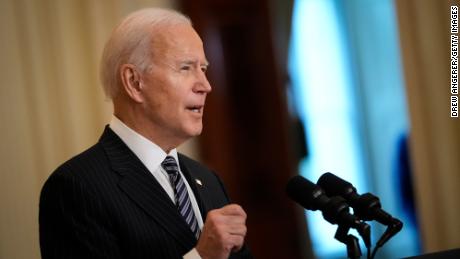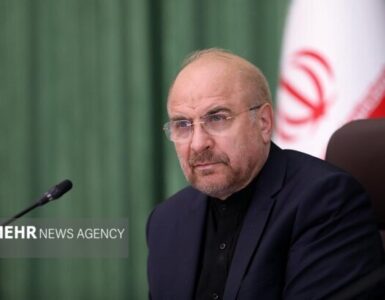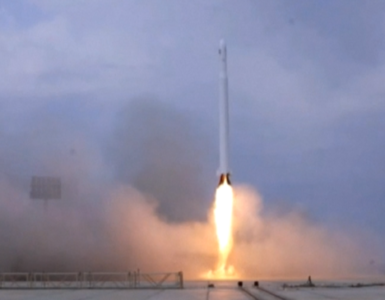Biden is expected to highlight blasting through his 100 million doses in 100 days timeline and the passage of his $1.9 trillion Covid-19 rescue bill, which, along with other social legislation in the planning stages, suggests that he is in the process of shaping the most progressive and ambitious Democratic presidency in decades. The doubling of the pace of vaccinations in the last two months represents tangible progress on the one issue on which Biden’s first year will likely be mostly judged — the quest to revive a semblance of normal life.
“Now is not the time to let down our guard. If we all do our part, after a long, dark year, we can show once again that we are the United States of America. … We’re going to beat this pandemic,” Biden said in Ohio on Tuesday, striking the balance between caution and hope that has marked his management of the pandemic, which polls show wins the approval of a majority of Americans.
That is no doubt the message the White House hopes Americans will take away from the news conference Thursday afternoon. But the 78-year-old commander-in-chief can expect a grilling on a fast-expanding front of tough issues coming at his administration on all sides, which shows how quickly unforeseen events can challenge a president.
A surge in border crossings by migrant children appeared to catch a White House focused on the pandemic off guard and offered Republicans an opening as they seek to slow his momentum — and build their 2022 attack lines against Biden’s narrow Democratic congressional majority.
Biden is also under pressure to explain how he can make good on his calls for sweeping gun control reforms after two mass shootings in a week and while opposing a rewrite of Senate filibuster rules, which appears the only way for Democrats to get new laws on the books amid staunch GOP opposition. The President must also appeal to all Americans to embrace the government’s vaccination program as polls show many conservative voters reluctant to roll up their sleeves — a trend that could threaten achievement of the herd immunity needed to end the pandemic.
And after escalating rhetorical conflicts with nuclear-armed rivals Russia and China, Biden has a chance Thursday to explain the principles behind his foreign policy at a moment when rivals sense US weakness and are seeking advantage. And with its customary sense of timing, North Korea is testing the new commander-in-chief with missile launches that are ratcheting up tensions in a showdown that no president in the last 70 years has managed to solve.
The President has maintained approval ratings above 50% in his early months in office because he arrived with a mandate to tackle the pandemic head on and executed his agenda with a steady approach that was the antithesis of the erratic, combative presidency of Donald Trump. Though he was unable to win bipartisan congressional support for his American Rescue Plan, Biden had the backing of the American people to get it passed — and could argue he was acting with bipartisan support nationally if not in Washington.
The White House has maintained a disciplined regime of televised events and strict messaging that recalled the successful approach of an election campaign that saw Biden make most appearances online because of the pandemic, save for well-executed scripted events like the Democratic National Convention and his participation in two presidential debates. But a rush of events in recent days has challenged that strategy, increasing calls among journalists for Biden to answer questions in a traditional setting. The President is holding his first formal White House news conference later in his term than his 15 most recent predecessors, who faced the music within 33 days of taking office, according to a CNN analysis of the last 100 years.
Unlike the coronavirus crisis that has killed more than half-a-million Americans, the issues that are now at the top of the nightly newscasts have defied bipartisan consensus for decades — and will provide a severe test of the President’s calls for national unity and cooperation between Democrats and Republicans.
In the nearly two weeks since Biden signed the rescue bill — at a time he had hoped to be taking a victory lap and explaining the elements of the legislation to voters — he has confronted mass shootings in Atlanta and Boulder, Colorado, that took the lives of 18 people, entrenched racism directed at Asian Americans, and the humanitarian crisis at the border where the number of people apprehended could now be on pace to exceed the levels that the Trump administration faced in 2019. The White House’s refusal to call the influx of children across the border a crisis — after changing, on humanitarian grounds, the Trump-era rules under which kids were sent back to Mexico — left the administration open to criticism that it had not thought through early immigration changes.
Two years ago, Democrats excoriated Trump administration officials for its handling of the crisis at the border. Now the problem is squarely within Biden’s domain and government resources are once again strained to the brink as more than 600 unaccompanied children cross the Mexico border each day.
As images emerge of children crowded together in plexiglass holding areas, sitting and sleeping on mats on the floor wrapped in Mylar blankets, it is the Biden administration that is facing charges of hypocrisy, inhumanity and a lack of transparency as children languish in Border Patrol facilities, akin to jail-like conditions, that the press hasn’t had access to. Facing constraints related to the coronavirus pandemic, the Department of Health and Human Services hasn’t been able to accommodate the growing number of arrivals.
On Wednesday, the administration notified Congress of its intent to use a third convention center in San Antonio, Texas, to shelter the arriving children, and the Pentagon approved a request from HHS to temporarily house unaccompanied migrant children at two Texas military bases. The same day, a dozen retired Border Patrol chiefs who served in administrations from both parties called out congressional leadership for their inaction, noting that the US immigration system is outdated and not equipped to handle migrant families and children.
“We’re not seeing any action. Our experience has taught us that now is the time to act. We need Congress to get on board. We need a recognition of the fact that there’s a crisis on the Southwest border,” Roy Villareal, who served as chief patrol agent in the Tucson sector from 2018 to 2020, told CNN’s Priscilla Alvarez.
With pressure mounting on Congress to direct more resources to the issue — and on Biden to find a solution — the administration took a minimal step toward transparency into border conditions by allowing a network pool camera to accompany members of Congress and White House officials to a Wednesday visit to a Texas facility holding unaccompanied migrant children. It’s a facility intended for the care of children and an example of the types of shelters the administration has been scrambling to find more of — unlike the Border Patrol facilities, which are supposed to be an interim step in the process.
When questioned about the fact that the Biden administration has not allowed news cameras inside Customs and Border Protection facilities where children have been detained for longer than the three days allowed under law, White House press secretary Jen Psaki said Wednesday the White House was looking for ways to increase access to journalists.
“This is just the first step in a process of providing greater access to the media,” Psaki said during a news briefing.
“We all agree that the Border Patrol facilities are not places where children should be. They are, children should be moving more quickly through those facilities. That is what our policy central focus is right now,” Psaki said.
The lack of broad press access so far has called into question the administration’s commitment to transparency, especially after the Trump administration’s assaults on the press and Biden’s repeated pledges to tell the American people the whole truth, no matter how bad a situation gets.
Vice President Kamala Harris, who was tasked by Biden Wednesday with overseeing the outreach to Central American countries to try to halt the flow of migrants to the US southern border, faced a preview of some of the difficult questions that Biden will encounter Thursday during an interview with CBS “This Morning” on Wednesday.
“It’s a huge problem. I’m not going to pretend that it’s not. It’s a huge problem,” Harris said in remarks that appeared to be somewhat of a do-over of the administration’s initial downplaying of the situation.
“Are we looking at overcrowding at the border, in particular these kids? Yes. Should these kids be in the custody of HHS, the Health and Human Services, instead of the Border Patrol? Yes. Should we be processing these cases faster? Yes.”
“This is, however, not going to be solved overnight,” the vice president said.
The appointment of Harris is one of the most high profile efforts that Biden could make to stress the seriousness with which his administration is now taking the border crisis — and offers a chance for the vice president to burnish her own political and foreign policy skills as she contemplates a possible run for the top job in future.
“I asked her, the VP today, because she’s the most qualified person to do it, to lead our efforts with Mexico and the Northern Triangle, and the countries that can help, need help in stemming the movement of so many folks, stemming the migration to our southern border,” Biden said on Wednesday.
But beyond Harris’ new oversight role, Biden will face many more questions about how his administration can actually stop that movement across the southern border and create long-term solutions in partnership with Congress. As with so many of the intractable problems he is now facing, there aren’t likely to be easy answers at his news conference Thursday.








